1928 was a lively year for aviation, with some exciting developments and also a few quirky innovations. The Soviet Union’s first five year plan delivered fighters and light bombers that sold in thousands down the years. While the United States continued producing small commercial biplanes and maintaining its military advantage.
Britain, on the other hand, focused more on maintaining control over its far-flung empire with technology that sometimes seemed to stand still. But France’s luxurious airliners were what really seized attention at airshows, and captured the dream that someday all would fly high with the birds.
However, this did not mean that individual innovation was dead. One brave pilot flew a wooden glider propelled by gunpowder rockets that worked for a few moments. While another lateral thinker created a delta-wing aircraft that looked like a pterodactyl, and he hoped could never stall, go into a spin and fly into the ground.
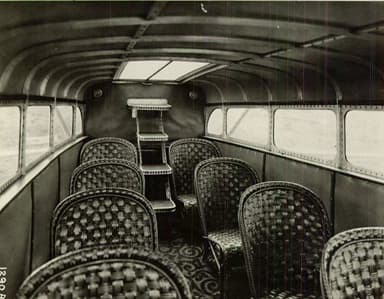
JANUARY 1928
The Soviet Union’s first five year plan swings into action. It places a high priority on the construction of new aircraft factories
American record-breaking pilot Frank Hawks flies 51,000 miles in a Ford Trimotor, and visits 150 cities promoting the Texaco oil company. An estimated 500,000 people see the aircraft, and he carries 7,200 passengers in the plane without mishap.
American Command-Aire 3C3 Utility, Training and Touring Biplane
At first sight, there was nothing special about the Command-Aire 3C3 open-cockpit, three-seater biplane. Similar aircraft with the aging Curtiss OX-5 engine were in production, although supplies of the surplus World War I engine were getting low. However, there was something different this time, and the Comand-Aire attracted over 200 sales.

https://en.wikipedia.org/wiki/File:Command_Aire_3C3_right_rear_Aero_Digest_February_1928.jpg
However, the Command Aire 3C3 was not a great success when it first flew in January 1928. It performed well enough in the air, but airspeed was slow. And then a top German Henkel engineer joined the team, and took the biplane to new heights.
First he tweaked it to obtain Central Aviation Authority authorization and approval. And then he standardized production using a ‘rotisserie-style’ rotating fuselage jig. Finally, he added almost-full-span ailerons allowing lateral control even after the aircraft stalled. This worked well enough to inspire subsequent Command Aire 4C3 and 5C3 versions.
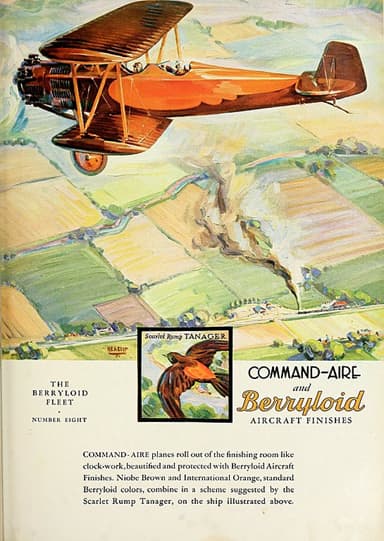
https://commons.wikimedia.org/wiki/File:Berryloid_Advert_showing_Command-Aire_5C3,_part_of_a_series._Aerodigest_November_1929_p.33.jpg
The specification of the Command-Aire 3C3 was as follows:
- Length 24.5 ft, height 8.5 ft, wing span 31.5 ft, wing area 303 sq ft
- Empty 1,410 lb, gross 2,200 lb, load 790 lb, crew one, two passengers
- Curtiss OX-5 Water-Cooled V-8 inline piston engine, 90 hp
- Max 100 mph, cruise 85 mph, control at 36 mph, range 440 mi
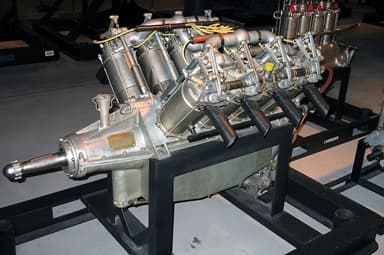
https://en.wikipedia.org/wiki/Curtiss_OX-5#/media/File:Curtiss_OX-5_1.jpg
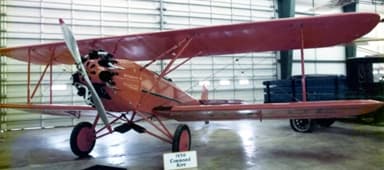
https://en.wikipedia.org/wiki/Command-Aire_3C3#/media/File:Command-Aire_3C3-AT_N970E,_W-108_at_the_Wings_and_Wheels_Museum.jpg
FEBRUARY 1928
Australian Bert Hinkler makes the first solo flight from England to Australia in an Avro Avian. He sets a new world record of just under 15½ days.
Soviet Polikarpov I-3 Biplane Fighter Aircraft
The Polikarpov I-3 was a follow-up to the disastrous crash of the Polikarpov DI-1 prototype, after the upper surface of one wing peeled away, causing it to disintegrate due to faulty assembly. Accordingly, the replacement was rock-solid, albeit heavier, and featured internal bracing wires to reinforce the wings.
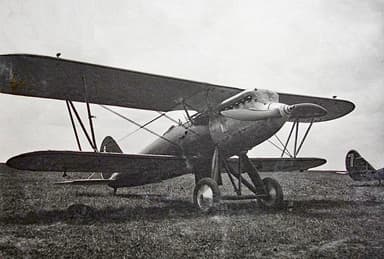
https://en.wikipedia.org/wiki/File:%D0%98-3.jpg
Some 389 Polikarpov I-3s were built after the first test flight on February 21, 1928. However, adjustments were required to the tail plane and elevators to improve directional stability, and control response between maneuvers.
But, there was nothing particularly revolutionary about the design itself. The sesquiplane, biplane aircraft with a shorter lower wing featured an oval-section semi-monocoque fuselage, covered with molded birch plywood, and with a small headrest faired into the fuselage.
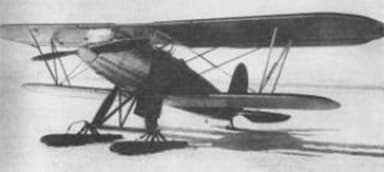
https://en.google-info.org/17134188/1/polikarpov-i-3.html
The specification of the Polikarpov I-3 was as follows:
- Length 26.5 ft, height unknown, wing span 36 ft, wing area 300 sq ft
- Empty weight 3,086 lb, gross weight 4,070 lb, crew one
- BMW VI V-12 liquid-cooled piston engine, 731 hp
- Max speed 173 mph, range 364 mi, ceiling 23,600 ft, 16,400 ft / 12.5 min
- Two 0.30 inch PV-1 apparently fixed, forward facing machine guns
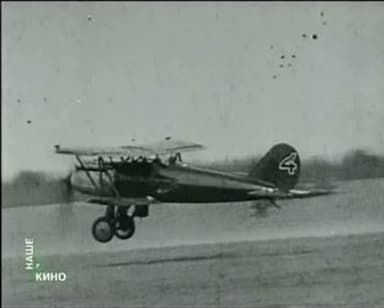
https://impdb.org/index.php?title=Esli_zavtra_voyna…
MARCH 1928
The British aircraft carrier HMS Courageous enters service as the world’s first carrier with transverse aircraft arresting gear.
Italian Mario de Bernardi sets a new airspeed record of 318 mph at Venice, Italy in a Macchi M.52bis.
American Kreider Reisner KR-21-A Monoplane
The Kreider-Reisner KR-21-A was a two seat monoplane that became the Fairchild 21. This was after Fairchild Aircraft took over Kreider-Reisner in 1929, and continued building it. It was a solid, no nonsense aircraft that, together with the KR-21-A B model, sold 51 after the first flight in November 1928.

https://commons.wikimedia.org/wiki/File:Fairchild_KR-21_Aero_Digest_August,1930.jpg
The Kreider-Reisner KR-21-A was a low-wing braced biplane, with two open tandem cockpits and powered by a 100 hp Kinner K-5 radial piston engine. Construction was a combination of wood and steel. It had dual controls in the open cockpit, rendering it suitable for leisure or training.
The subsequent KR-21-A B model, of which only five were produced, was a more powerful version boasting a 125 bhp Kinner B-5 engine. Three of these were built from scratch, whereas the other two were modified KR-21-As. The KR-22 parasol-wing monoplane was a further extension of the design.
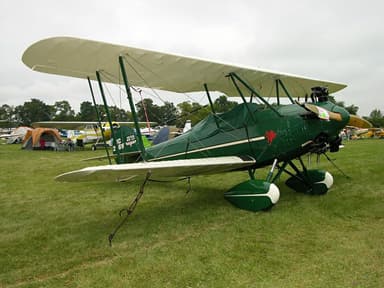
https://en.wikipedia.org/wiki/File:KR-21.jpg
The specification of the (later) KR-21-A parasol monoplane was as follows:
- Length 21.5 ft, height unknown, wing span 28 ft, wing area 139 sq ft
- Empty weight 755 lb, max take-off weight 1,250 lb, crew two
- Kinner K-5 5-cylinder radial piston engine, 90 hp
- Max speed 105 mph, cruise 90 mph, range 425 mi, ceiling 9,440 ft
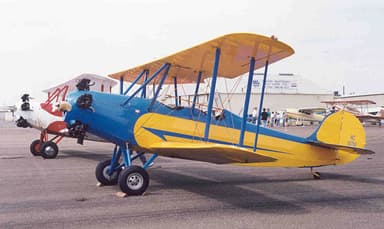
https://commons.wikimedia.org/wiki/File:FairchildKR21_(4557029990).jpg
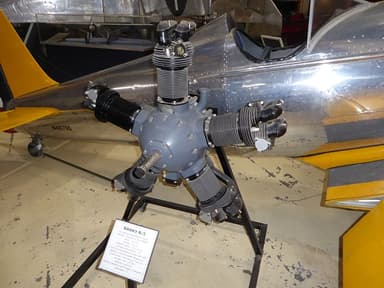
https://commons.wikimedia.org/wiki/File:Kinner_K-5_5-cylinder_radial_aircraft_engine_1.jpg
French Farman F.160 Large Heavy Bomber Biplane
The Farman F.160 was an upgrade of the tremendously successful F.60 Goliath design introduced in the years immediately after World War I. The most noticeable change Farman Aviation Works introduced was a larger tail plane, although there were a number of other detail changes.

https://commons.wikimedia.org/wiki/File:Farman_F.160_L%27A%C3%A9rophile_March,1928.jpg
Beyond that, the Farman F.160 continued in the tradition of its predecessor, being a large three-bay biplane of conventional configuration, with un-staggered wings of equal span. Although the original intention was to deploy it as a night bomber, in practice most were float-equipped torpedo bombers for the maritime division.
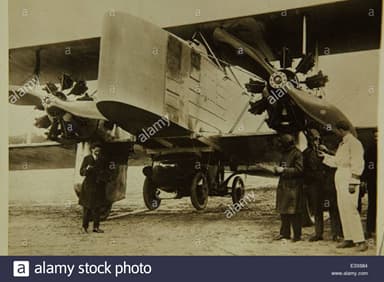
Link to Image
The specification of the F.168 seaplane torpedo bomber version was as follows:
- Length 50 ft, height 20 ft, wing span 86 ft, wing area 11,718 sq ft
- Empty weight 10,140 lb, gross weight 14,990 lb, crew five
- Two Gnome-Rhône 9Akx engines on wings, 480 hp each
- Max speed 108 mph, range 500 mi, ceiling 16,400 ft, climb 410 ft / min
- Front and rear machine gun turrets, unknown bomb load

https://commons.wikimedia.org/wiki/File:Farman_F.160_forward_fuselage_L%27A%C3%A9rophile_March,1928.jpg
APRIL 1928
Hermann Köhl, Ehrenfried Günther Freiherr von Hünefeld, and James Fitzmaurice complete the first non-stop flight across the Atlantic Ocean from east to west in a Junkers W.33 named Bremen.
French aviators Dieudonné Costes and Joseph Le Brix complete their round-world flight they began six months earlier in their Breguet 19 G.R. Nungesser-Coli. They have traveled 35,652 miles with a total flying time of 350 hours.
Italian Royal Air Force General Alessandro Guidoni is killed at Montecelio, Italy, when a new model of parachute he is personally testing fails.
French Farman F.160 High Wing Monoplane Utility Aircraft
The Farman F.160 was a conventionally configured, high-wing strut-braced monoplane, with a fully enclosed cabin and fixed, tailskid undercarriage. Private companies deployed some in an air taxi role, while others were part of airline fleets as a legacy of smaller operators they absorbed.
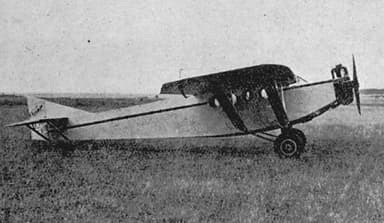
https://en.wikipedia.org/wiki/File:Farman_F.190_right_side_Annuaire_de_L%27A%C3%A9ronautique_1931.jpg
The Farman F.160 proved popular with civil and military operators resulting in 158 sales. Civilians used them in France, Portugal, Romania, and Yugoslavia too. They also found a military role in Brazilian, Ethiopian, Portuguese, Spanish, Venezuelan, and Uruguayan air forces. The Farman F.390 was a larger version with a slightly enlarged cabin, revised tail fin, and four-blade propeller
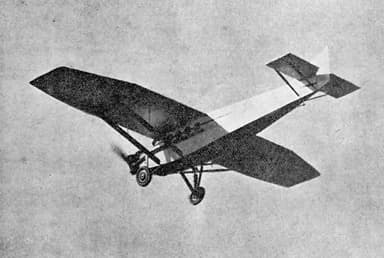
https://en.wikipedia.org/wiki/File:Farman_F.190_Annuaire_de_L%27A%C3%A9ronautique_1931.jpg
The specification of the Farman F.160 was as follows:
- Length 32.5 ft, height 9.5 ft, wing span 46 ft, wing area 420 sq ft
- Empty weight 1,653 lb, gross weight 3,527 lb, crew one, four passengers
- Gnome et Rhône 5Ba 5-cylinder air-cooled radial piston engine, 230 hp
- Max speed 115 mph, cruise 103 mph, range 500 mi, ceiling 16,900 ft

https://commons.wikimedia.org/wiki/File:Farman_F.190_sanitaire_L%27Air_May_15,1929.jpg
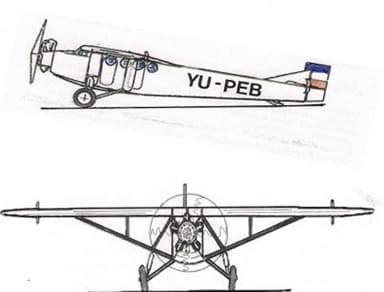
https://commons.wikimedia.org/wiki/File:Farman_F.190_Skica.jpg
French Potez 32 / 33 Civilian / Military High Wing Monoplanes
The Potez 32 was a single engine monoplane transport aircraft, of which 102 were made including the Potez 33 military version. It used the same fuselage, tail unit and landing gear from the Potez 29 biplane. But instead, it was a high-wing strut-braced monoplane configured as either a five-passenger transport or a mail plane.
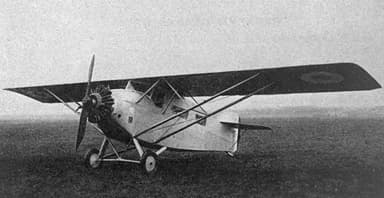
https://commons.wikimedia.org/wiki/File:Potez_32_L%27Ann%C3%A9e_a%C3%A9ronautique_1927.jpg
The Potez 33 militarized version was a liaison / observation aircraft, which could also be used as a pilot or observer trainer. It was fitted with dual controls, and had large observation windows. It also had a dorsal machine gun position as armament, and could carry light bombs on under-fuselage racks.
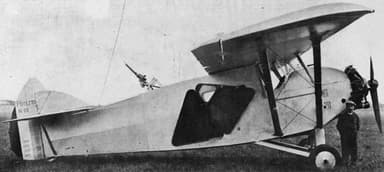
https://commons.wikimedia.org/wiki/File:Potez_33_right_side_photo_NACA_Aircraft_Circular_No.96.jpg
The specification of the Potez 33/2 military version was as follows:
- Length 33.5 ft, height 13 ft, wing span 47.5 ft, wing area 380 sq ft
- Empty weight 2,094 lb, gross weight 3,858 lb, crew two
- Salmson 9Ab 9-cylinder air-cooled radial piston engine, 230 hp
- Max 120 mph, cruise 93 mph, range 420 mi, ceiling 14,800 ft
- Two 0.303 inch Lewis machine guns on a ring mount.
- Twelve by 22 lb bombs in an internal bomb-bay

https://commons.wikimedia.org/wiki/File:Potez_32_cockpit_L%27A%C3%A9ronautique_March,1928.jpg

https://commons.wikimedia.org/wiki/File:Potez_32_cabin_looking_forward_L%27Air_August_1,1928.jpg
MAY 1928
The Reverend John Flynn founds the Royal Flying Doctor Service of Australia using a De Havilland DH.50. The service takes medical treatments to remote parts of the Australian bush.
Irishwoman Mary Lady Heath becomes the first person to fly from South Africa to London solo in a small, open-cockpit Avro Avian plane. The flight takes three months due to various mishaps, including a crash landing after she suffered heat stroke.
Sixty-one Italian Royal Air Force seaplanes – 51 Savoia-Marchetti S.59bis and 10 Savoia-Marchetti S.55s – set out from Orbetello, Italy, on a six-stage, mass-formation flight circuiting the Western Mediterranean to showcase the Italian aviation industry.
French Couzinet 10 Arc-en-Ciel Low Wing Monoplane
The Couzinet 10 Arc-en-Ciel (Rainbow) was not a commercial success. However, it did demonstrate well-coordinated controls on May 7, 1928, and the ability to maintain altitude with one wing engine speed reduced. And so it deserves its place in aviation history. Its design was also ahead of convention, foretelling the future to some extent.

https://commons.wikimedia.org/wiki/File:Couzinet_10_photo_NACA_Aircraft_Circular_No.77.jpg
The Couzinet 10 Arc-en-Ciel was a completely wooden, three-engine, aerodynamically refined, cantilever low wing monoplane. The wings containing seven fuel tanks were trapezoidal in shape, but with long elliptical tips and narrow-chord ailerons filling most of the straight part of the trailing edges.
The enclosed cockpit was over the wing leading edge. There was a windowed cabin behind it with access through a starboard-side door. This contained two berths forward and, towards the back tables for radio-operator and navigator with a toilet further aft.
The designers hoped their aircraft would lead to safe long range passenger transport, for example on the South Atlantic route. The aircraft crashed later killing the designer and the engineer. However, it did inspire the smaller Couzinet 20 and 30 series, and the larger Couzinet 40 and 70.
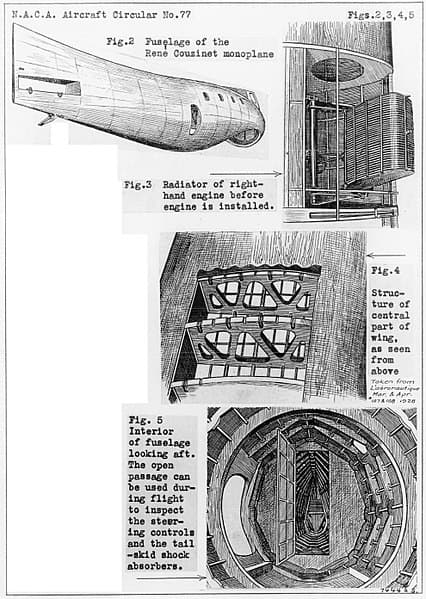
https://commons.wikimedia.org/wiki/File:Couzinet_10_detail_drawing_NACA_Aircraft_Circular_No.77.jpg
The specification of the Couzinet 10 was as follows:
- Length 50.5 ft, height 12.5 ft, wing span 88.5 ft, wing area 998 sq ft
- Empty weight 8,598 lb, gross weight 19,842 lb, crew four
- Three Hispano-Suiza 8Ac water-cooled V8 engines 180 hp each
- Max speed 140 mph, cruise 110 mph, range 1,900 mi, ceiling 20,000 ft
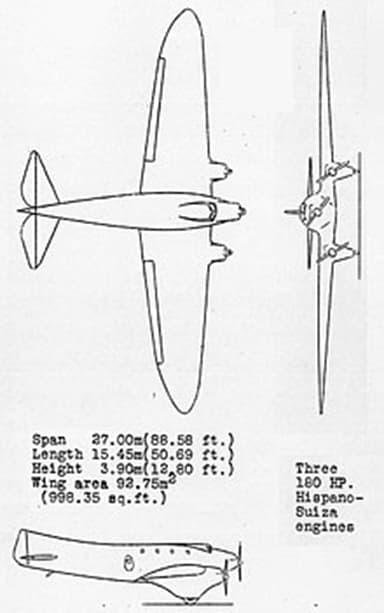
https://en.wikipedia.org/wiki/Couzinet_10#/media/File:Couzinet_10_3-view_drawing_NACA_Aircraft_Circular_No.77.jpg
American Sikorsky S-38 Amphibious Passenger Aircraft
The Sikorsky S-38 was a twin-engine, ten-seat sesquiplane amphibious aircraft that first flew on May 25, 1928. Some 101 were manufactured, and it served successfully for Pan American Airways and the United States military, despite being Sikorsky’s first widely produced amphibious flying boat.

https://en.wikipedia.org/wiki/File:Sikorsky_PS-3,_1930.jpg
The Sikorsky S-38 had very good take-off characteristics from land and water, the designer boasted. It had a climb of 1,000 feet per minute fully loaded, and a maximum speed close to 130 miles per hour. It could also cruise safely on a single engine, making it quite exceptional for its time.
Colonel Lindbergh used an S-38 to inaugurate an air mail service between the United States and the Panama Canal. There were a number of variants of what turned out to be a highly successful design.

https://commons.wikimedia.org/wiki/File:Sikorsky_S-38_1929_(18).JPG
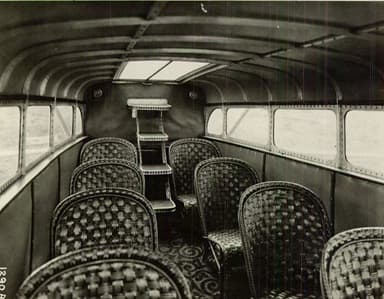
https://commons.wikimedia.org/wiki/File:Sikorsky_S-38_interior_photo_NACA_Aircraft_Circular_No.79.jpg
The specification of the Sikorsky S-38 was as follows:
- Length 40.5 ft, height 14 ft, wing span 71.5 ft, wing area 720 sq ft
- Empty 6,548 lb, gross 10,479 lb, crew two, eight passengers / 4,480 lb payload
- Two Pratt & Whitney R-1340 Wasp 9-cylinder radial piston engines, 420 hp each
- Max 124 mph, cruise 109 mph, range 600 mi, ceiling 18,000 ft, climb 750 ft / min
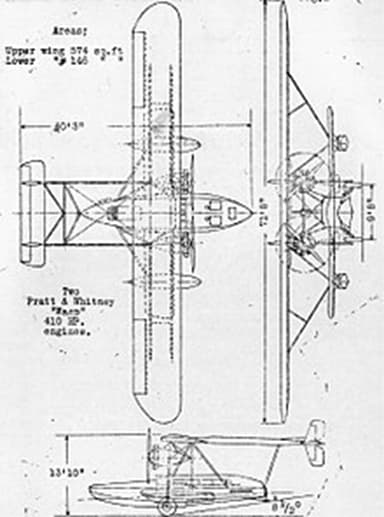
https://en.wikipedia.org/wiki/Sikorsky_S-38#/media/File:Sikorsky_S-38_3-view_drawing_NACA_Aircraft_Circular_No.79.jpg

https://commons.wikimedia.org/wiki/File:Sikorsky_S-38_1929_(25).JPG
JUNE 1928
Italian aviators Arturo Ferrarin and Carlo Del Prete complete a nonstop flight in their Savoia-Marchetti S.64. This sets a new world nonstop distance-record over a closed circuit of 4,791 miles, a new world endurance record of 58 hours, and a new world record for average speed over a distance of 3,110 miles of 87 mph.
Charles Kingsford Smith and his crew make the first flight across the Pacific Ocean from Oakland, California to Brisbane, Australia via Honolulu and Fiji in their Fokker F.VIIb/3m Southern Cross. The flight takes 83 hours.
A Latham 47 flying boat carrying Norwegian polar explorer Roald Amundsen and five others disappears on a flight to search for survivors of the Italian airship Italia in the Arctic. Their bodies are never found.
German Lippisch Ente First Rocket-Powered Full Size Aircraft
The Lippisch Ente nicknamed ‘Duck’ was a tailless glider intrepid innovator Alexander Lippisch developed, after cutting his teeth on rocket-powered stunt vehicles for the Opel auto manufacturer. He climbed a mountain that was the focus for German gliding one day, and entertained the idea of rocket-powering one of the powerless aircraft.

https://www.reddit.com/r/WeirdWings/comments/h0hnkr/the_lippisch_ente_the_worlds_first_rocket_plane/
After viewing several of his tailless designs, Lippish and two colleagues chose one they considered a candidate for rocket propulsion. They installed two black powder, gunpowder rockets at the rear end, and added an electrical switch in the cockpit. They also devised a counterweight system under the cockpit floor. This would automatically adjust the aircraft’s center of gravity as the fuel of the rockets burned up.
Then they found a willing helper by the name of Fritz Stamer, who had worked with Lippish before. The intention was he would fire the rockets in series for a thirty-second burn time each. The Duck took off and flew a 4,900-foot circuit in June 1928.

https://commons.wikimedia.org/wiki/Category:Lippisch_Ente#/media/File:RRG_Raketen-Ente_Deutsches_Segelflugmuseum_02_2009-05-31.jpg
However, when they tried firing them simultaneously, one of the rockets exploded, punching holes in both wings and setting the aircraft alight. Stamer achieved a safe landing from 65 feet up. The world’s first rocket-powered glider burned beyond any hope of salvage, which was the end of the experiment.
The specification of the RRG Raketen-Ente was a follows:
- Length 14 ft, height unknown, wing span 39 ft, wing area 219 sq ft
- Two Sander black powder rockets, 44.1 pound-force thrust each

https://commons.wikimedia.org/wiki/File:RRG_Raketen-Ente_Deutsches_Segelflugmuseum_01_2009-05-31.jpg
British Hawker Hart Two-Seater Biplane Fighter Aircraft
The Hawker Hart was the first in a series of military aircraft that were prominent between the two World Wars, but were obsolete when the second conflict began. Others in the series that followed included the Audax, Demon, Hardy, Hind and Osprey variants.
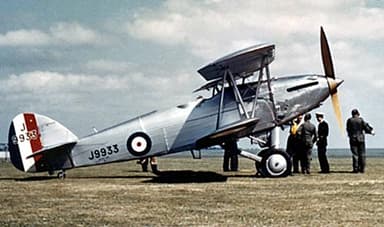
https://en.wikipedia.org/wiki/File:Camm_hart_500.jpg
The Hawker Hart was a single-bay biplane with a Rolls-Royce engine that later evolved into the Rolls-Royce Kestrel. It was a metal structure of steel-tube, covered by aluminum panels and fabric. While the wings comprised steel spars and duralumin ribs, covered in fabric.
The two crewmen sat in individual tandem cockpits, with the pilot sitting under the wing trailing edge, and operating a single 0.303 inch machine gun mounted on the port side of the cockpit. The observer sat behind the pilot, and was armed with a single gun on a ring mount. However, he lay prone under the pilot’s seat while aiming the bombs.
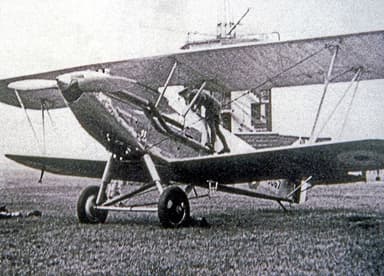
https://en.wikipedia.org/wiki/File:Hawker_Audax_K3077_26_Sq_BTN_08.09.34_edited-2.jpg
The specification of the Hawker Hart with the Kestrel engine was as follows:
- Length 29.5 ft, height 10.5 ft, wing span 37.5 ft, wing area 350 sq ft
- Empty weight 2,530 lb, max take-off 4,596 lb, crew two
- Rolls-Royce Kestrel IB water-cooled V12 engine, 525 hp
- Max 185 mph, stall 45 mph, range 430 mi, ceiling 22,800 ft, climb 10,000 ft / 8 min
- One synchronized forward firing 0.303 inch Vickers machine gun
- One 0.303 inch Lewis Gun on scarff ring in the rear cockpit.
- Total bomb load under wings not exceeding a total 520 pounds

https://upload.wikimedia.org/wikipedia/commons/thumb/d/dd/Hawker_Osprey.jpeg/330px-Hawker_Osprey.jpeg
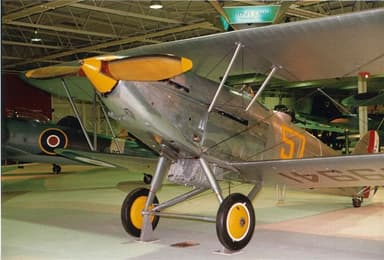
https://upload.wikimedia.org/wikipedia/commons/thumb/6/6f/Hawker_Hart_II_RAF_Museum.jpg/330px-Hawker_Hart_II_RAF_Museum.jpg
JULY 1928
Italian aviators Arturo Ferrarin and Carlo Del Prete set a new nonstop flight distance record in a Savoia-Marchetti S.64 flying from Montecelio, Italy, to Brazil. They remain airborne for 48 hours and cover 5,030 miles nonstop.
Irish-born aviator Mary Lady Heath becomes the first woman appointed as a co-pilot with a civil airline, KLM.
American Boeing 80 Commercial Airliner with Air Mail Capacity
The Boeing 80 was built for Boeing’s own airline, Boeing Air Transport, although some of the 16 sales also went to other airlines. It was designed with service in high-lying areas in mind, and hence retained a biplane design for taking off and landing at difficult airfields on its routes.
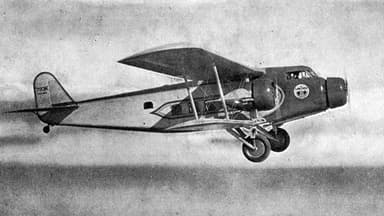
https://commons.wikimedia.org/wiki/File:Boeing_80A_L%27Ann%C3%A9e_a%C3%A9ronautique,1929.jpg
The Boeing 80’s fuselage was fabric covered steel and aluminum tube construction, while the wings were fabric covered steel and duralumin. The aircraft accommodated 12 passengers in three-abreast-seating in a well-appointed cabin. These increased to 18 with the longer, more powerful Model 80A.
The prototype aircraft first flew on July 27, 1928, and then entered service with Boeing Air Transport two months later. The company introduced female flight attendants in May 1930, hiring eight all of whom were unmarried registered nurses.
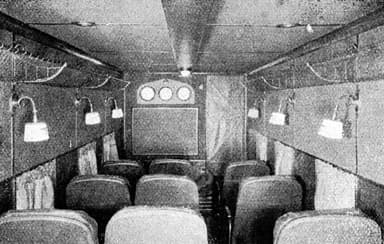
https://commons.wikimedia.org/wiki/File:Boeing_80_cabin_L%27A%C3%A9ronautique_January,1929.jpg
The specification of the larger Boeing 80A version was as follows:
- Length 50.5 ft, height 15.5 ft, wing span 80 ft, wing area 1,220 sq ft
- Empty weight 10,582 lb, max take-off 17,500 lb, crew three, 18 passengers
- Three Pratt & Whitney R-1690 Hornet air-cooled radial engines, 525 hp each
- Max 138 mph, cruise 125 mph, range 440 mi, ceiling 14,000 ft, climb 900 ft / min
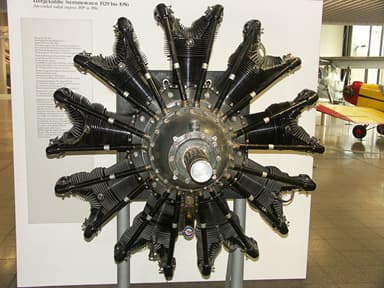
https://en.wikipedia.org/wiki/Pratt_%26_Whitney_R-1690_Hornet#/media/File:Pratt_&_Whitney_R-1690_Hornet_jaypee.jpg
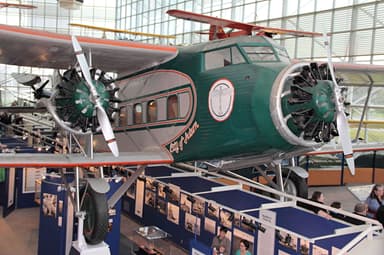
https://commons.wikimedia.org/wiki/File:Boeing_80_-_Vasters_2016_(6598877681)_(3).jpg
AUGUST 1928
The British Daily Mail newspaper kits out a de Havilland DH.61 as a mobile press office. It carries its own darkroom and a motorcycle.
British Westland Pterodactyl Mk. 1A Experimental Tailless Aircraft
The Westland Pterodactyl Mk. 1A was built by Westland to designs by Geoffrey Hill, who first began experimenting with tailless gliders in 1924. He was concerned so many pilots died when their aircraft stalled, went into a spin and flew into the ground. He wanted to design something that would prevent this happening.

https://en.wikipedia.org/wiki/File:Westland_Pterodactyl_2_seater_flying_wing_1_inc_description.JPG
The Westland Pterodactyl Mk. 1A project was funded through a British Air Ministry contract. The prototype that flew in 1928 was a braced, shoulder-wing monoplane with fully moving wingtips, and a single pusher propeller. The wing tips served as elevators or ailerons depending on whether they operated in the same way or in opposite directions.
A 1932 derivative, the Mk. V was a more powerful version with an unswept, short-span sesquiplane lower wing, and a forward tractor propeller. The rear gun turret had an outstanding field of fire, and the aircraft rivalled the Hawker Hart in terms of performance and fly-ability. However, the Air Ministry preferred the Hawker Hart and the project died.
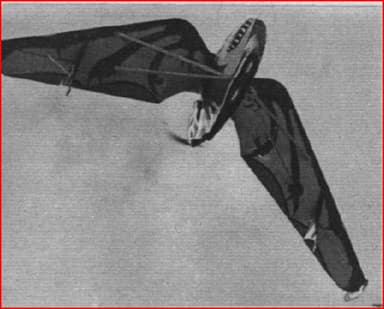
https://upload.wikimedia.org/wikipedia/commons/c/c4/Westland_Pterodactyl_2_seater_flying_wing_below_view.JPG
The Westland Pterodactyl Mk. 1A specification was as follows:
- Length 20.5 ft, height 12.5 ft, wing span 47.5 ft, wing area 395 sq ft
- Empty weight 3,532 lb, max take-off 5,099 lb, crew two
- 600hp Rolls Royce Goshawk steam-cooled 12 cylinder v-type engine
- Max speed 190 mph, ceiling 30,000 ft, two Vickers machine guns
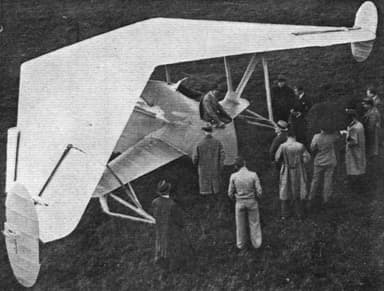
http://aviadejavu.ru/Site/Crafts/Craft32508.htm
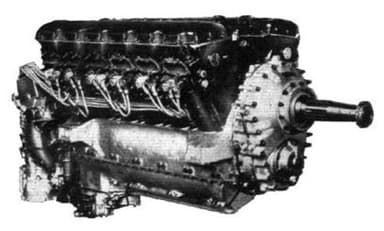
https://en.wikipedia.org/wiki/File:RRGoshawk.JPG
SEPTEMBER 1928
Belgium’s top scoring fighter ace of World War I, Baron Willy Coppens sets a new world parachute record over France near Paris. He descends safely from an altitude of 19,685 feet.
OCTOBER 1928
Soviet Polikarpov R-5 (P5) Light Reconnaissance Bomber Aircraft
The Polikarpov R-5 was an example of growing Russian aviation independence. It was a local design – albeit with a licensed German engine – by Polikarpov Design Bureau. And it was turned out in the 7,000’s after its first flight in the autumn of 1928. It also became a popular civilian transport shuttle, that remained in service until after the Second World War ended.
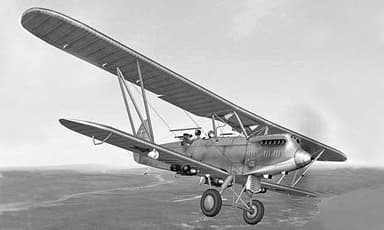
https://commons.wikimedia.org/wiki/File:Polikarpov_R-5_rb_mirroir.jpg
The Polikarpov R-5 was an unequal-span, single-bay biplane of mainly wooden construction. It became the standard Soviet reconnaissance and attack aircraft used by over 100 regiments. Further modified versions served as floatplanes, ground-attack aircraft and civil transports.
The aircraft saw action in numerous wars, including as night bombers and liaison aircraft through to 1944. Civil versions were used to carry up to 882 pounds of freight, with many being fitted with enlarged rear cockpits to carry two passengers. Other aircraft had enclosed cabins for more passengers.
Still more had the unusual addition of underwing containers (kasetas) for carrying additional freight or passengers. On at least one occasion a Polikarpov R-5 transported 16 people, including 7 in each kaseta container.
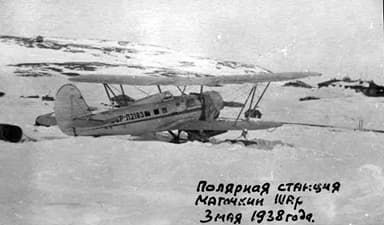
https://commons.wikimedia.org/wiki/File:%D0%9F%D0%BE%D0%BB%D1%8F%D1%80%D0%BD%D0%B0%D1%8F_%D0%BF%D0%BE%D1%87%D1%82%D0%B0_%D0%9F%D0%A0-5_%D0%A1%D0%A1%D0%A1%D0%A0-%D0%9B2183.jpg
The specification of the 1930 Polikarpov R-5 military version was as follows;
- Length 34.5 ft, height 10.5 ft, wing span 50.5 ft, wing area 540 sq ft
- Empty weight 4,341 lb, gross weight 7,158 lb, crew two
- Mikulin M-17B V-12 liquid-cooled piston engine, 680 hp
- Max 142 mph, range 500 mi, ceiling 21,000 ft, 3,200 ft in 2 min
- One fixed forward firing PV-1 machine gun, and one rear DA machine gun
- Total bomb load 550 pounds held on bomb racks

https://commons.wikimedia.org/wiki/File:ARK-5.jpg

https://commons.wikimedia.org/wiki/File:Polikarpov_R-5_(3316)_(9704390378).jpg
American Butler Blackhawk Open-Cockpit Single Engine Biplane
The Butler Blackhawk could have been produced in larger numbers, had their production run not been disrupted by the Great Depressions of 1929. As it was, Butler Aircraft Corporation only managed to make thirteen of them, before retreating to its mainline business of manufacturing prefabricated steel buildings, including aircraft hangars.

https://en.wikipedia.org/wiki/File:Butler_Blackhawk_NC7857_msn_100_prototype_after_conversion_from_Skyway_(cropped).jpg
The Butler Blackhawk fuselage was steel tubing, faired to shape with light wooden battens and covered in doped aircraft linen. The biplane wings were built up around two solid spruce spars, with built-up plywood ribs forming airfoil sections. However, no center section was used, as the wing panels were joined along the centerline.
There were two cockpits, one with space for two passengers up front, and a baggage compartment located behind the pilot. Unusually, the pilot had dual engine controls, one on each side of the cockpit. Only the lower wings had ailerons, with activation by push-pull tubes. Some aircraft were still in use as crop dusters at the end of the 1930s.
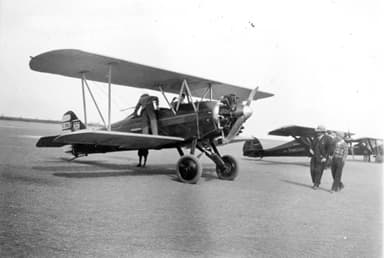
https://commons.wikimedia.org/wiki/File:Butler_Blackhawk_NC7857_Amarillo_9_March_1930.jpg
The specification of the Butler Blackhawk was as follows:
- Length 24 ft, height 9 ft, upper wing span 34 ft, total wing area 295 sq ft
- Empty weight 1,885 lb, gross weight 2,900 lb, crew one, two passengers
- Wright J-5 Whirlwind air-cooled, nine cylinder radial engine
- Max 130 mph, cruise 110 mph, range 650 mi, ceiling 14,000 ft, 1,000 ft / I min

Image Link
NOVEMBER 1928
María Bernaldo de Quirós becomes the first Spanish woman to be awarded a pilot’s license.
British Fairey Long Range Experimental Monoplane
The Fairey Long Range Monoplane was in response to the Directorate of Technical Development’s determination to break the absolute distance world record set by a Hawker Horsley bomber. However, the intention was to drive progress forward, as opposed to setting a particular record. The maiden flight was on November 14, 1928.
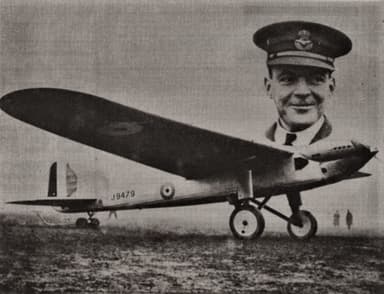
https://commons.wikimedia.org/wiki/File:Arthur_G._Jones-Williams.jpg
Extensive wind tunnel tests settled on a high wing design allowing gravity feed (with wind-driven backup) from 850 US gallon fuel tanks. The fabric-covered wings were wood spars, with steel pyramid internal bracing to add torsional rigidity, and evenly distribute flight loads as fuel was consumed.
Other features to assist long range flying included two parallel oil filter circuits, allowing one filter to be removed and cleaned while the other remained in operation. There was even a pneumatic bed for a reserve pilot.
There were several false starts in the effort to set a new world record, including the loss of the first aircraft and crew. However, in February 1933 a subsequent aircraft and crew flew non-stop from Cranwell, UK to Walvis Bay, Namibia, setting a new world long-distance record of 5,410 miles.

https://commons.wikimedia.org/wiki/File:Fairey_Long_Range_monoplane_front_Le_Document_a%C3%A9ronautique_March,1929.jpg
The specification of the Fairey Long Range Monoplane was as follows:
- Length 48.5 ft, height 12 ft, wing span 82 ft, wing area 850 sq ft
- Max take-off weight 17,500 lb, crew two, 2-bladed fixed-pitch propeller
- Napier Lion XIa W-12 liquid-cooled piston engine, 570 hp
- Cruise speed 110 mph, wing load 20.7 lb / sq ft, take-off run 4,500 ft
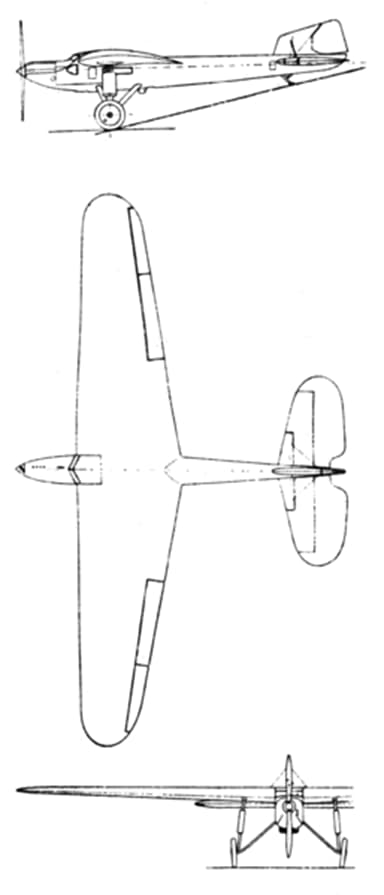
https://en.wikipedia.org/wiki/File:Fairey_Long_Range_Monoplane_3-view_L%27A%C3%A9rophile_September,1929.png
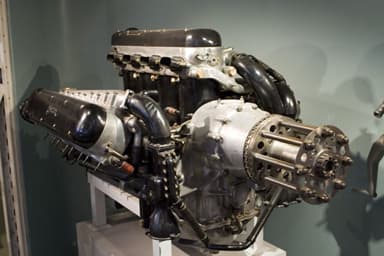
https://en.wikipedia.org/wiki/Napier_Lion#/media/File:CASM_-_Napier_Lion_II_-_030906.jpg
DECEMBER 1928
French aviators Dieudonné Costes and Paul Codos set a world distance record by flying 4,986 miles over a closed circuit in their Breguet 19 Super Bidon “Point d’Interrogation”.
Pilot Carl Ben Eielson carries explorer Hubert Wilkins in the first extended flight over Antarctica, using a Lockheed Vega flying from Deception Island.
British De Havilland Hawk Moth High-Wing Cabin Monoplane
The De Havilland Hawk Moth represented aviation progress to date in several ways. It featured an energy-efficient single pair of high wings, and the steel-frame fuselage provided comfortable accommodation for three passengers, cargo or a mix of both. However, it failed to compete with its American competitors, and so in the end only eight were built.
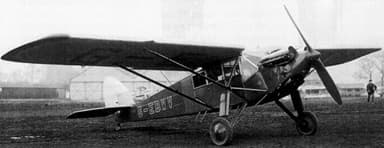
https://en.wikipedia.org/wiki/File:De_Havilland_DH.75_photo_NACA_Aircraft_Circular_No.91.jpg
When the DH.75 Hawk Moth first flew on December 7, 1928, the company hoped to export it as an air-taxi, or as light transport. The fuselage was steel tubing covered in fabric, while the wings had wooden frames.
The prototype used a 200 horsepower de Havilland Ghost engine, comprising two de Havilland Gipsy motors on a common crankcase forming an air-cooled V-8. However, this proved underpowered and so the company substituted a 240 hp Armstrong Siddeley Lynx radial engine instead, and increased the wing chore and span.

https://commons.wikimedia.org/wiki/File:DH.75_Hawk_Moth_engine_mount_photo_NACA_Aircraft_Circular_No.91.jpg
The specification of the subsequent DH.75A Hawk Moth land-plane was as follows:
- Length 29 ft, height 9.5 ft, wing span 47 ft, wing area 334 sq ft
- Empty weight 2,380 lb, max take-off weight 3,650 lb, crew one, three passengers
- Armstrong Siddeley Lynx VIA radial engine, 240 hp
- Max 127 mph, cruise 105 mph, range 560 mi, ceiling 14,500 ft, climb 710 ft / min
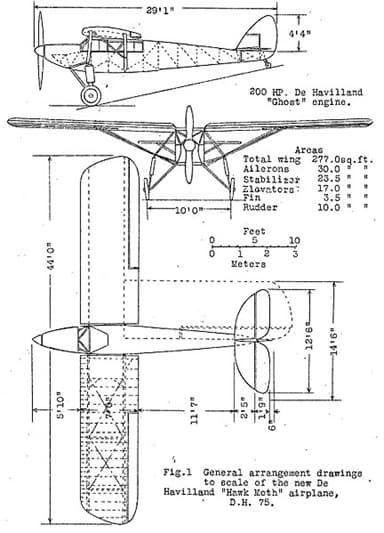
https://en.wikipedia.org/wiki/File:DH.75_Hawk_Moth_3-view_drawing_NACA_Aircraft_Circular_No.91.jpg
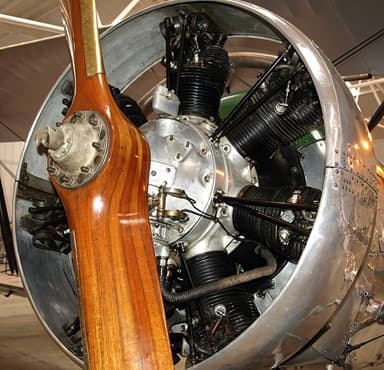
https://en.wikipedia.org/wiki/Armstrong_Siddeley_Lynx#/media/File:Armstrong_Siddeley_Lynx_OW.JPG








